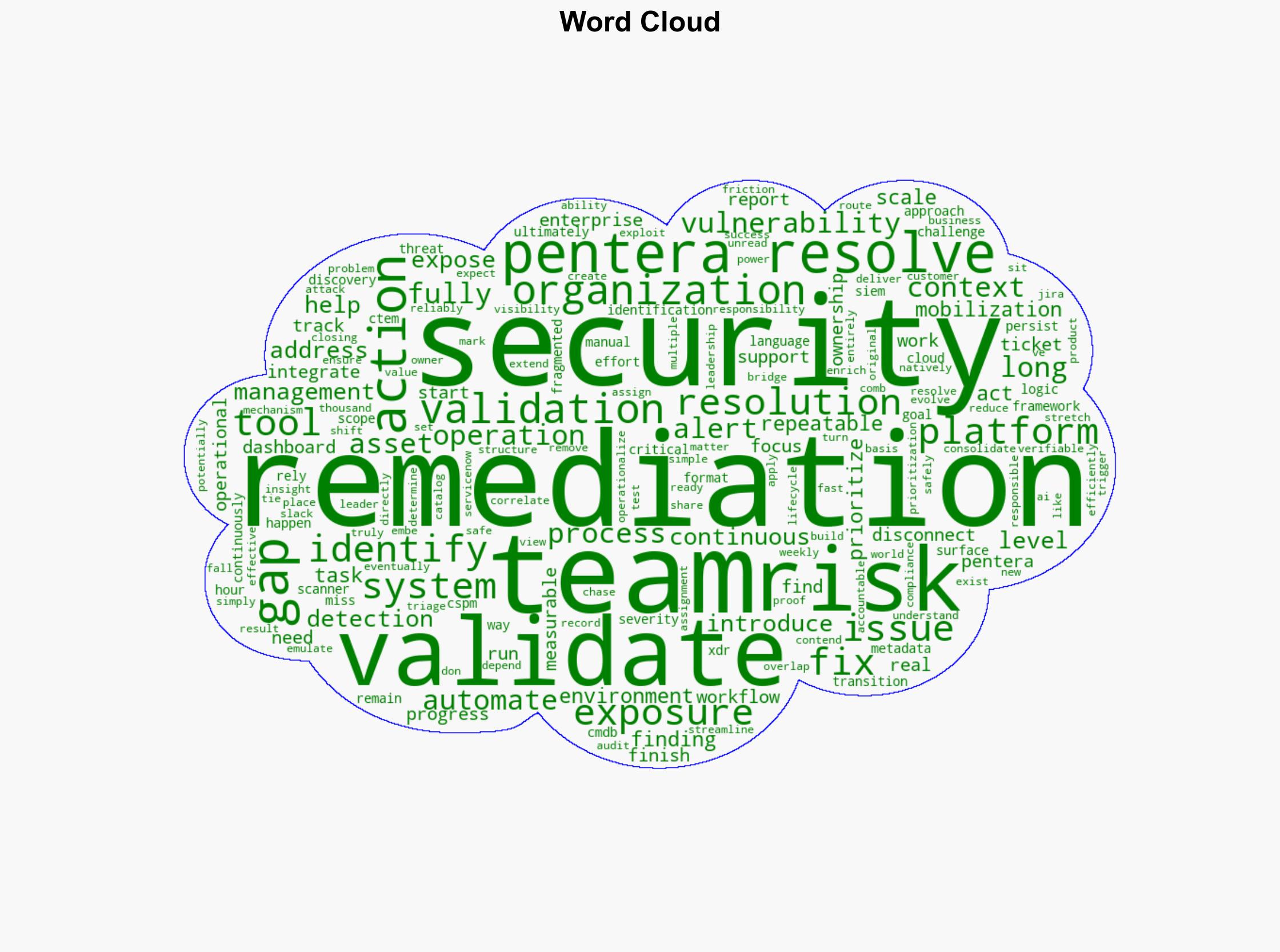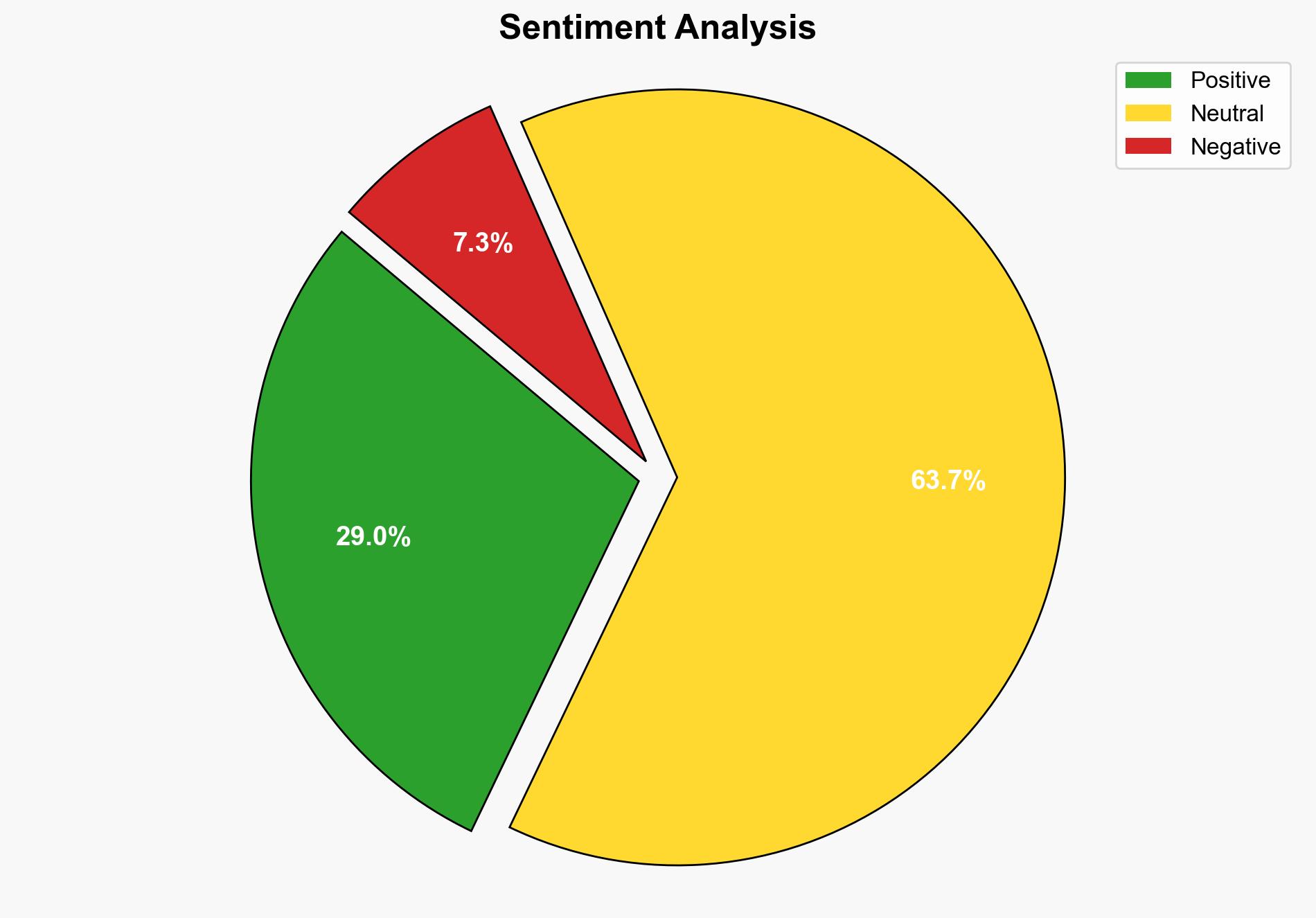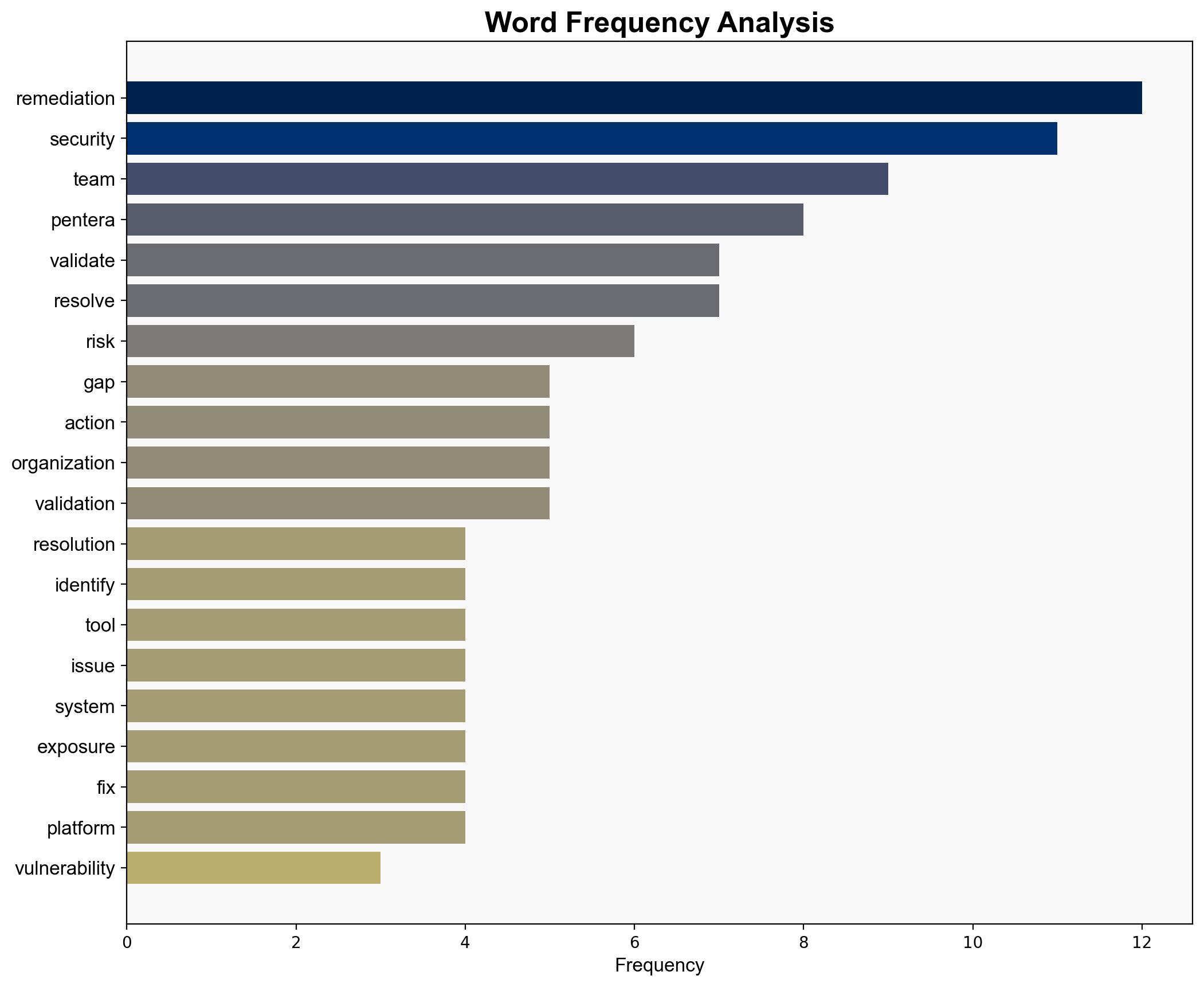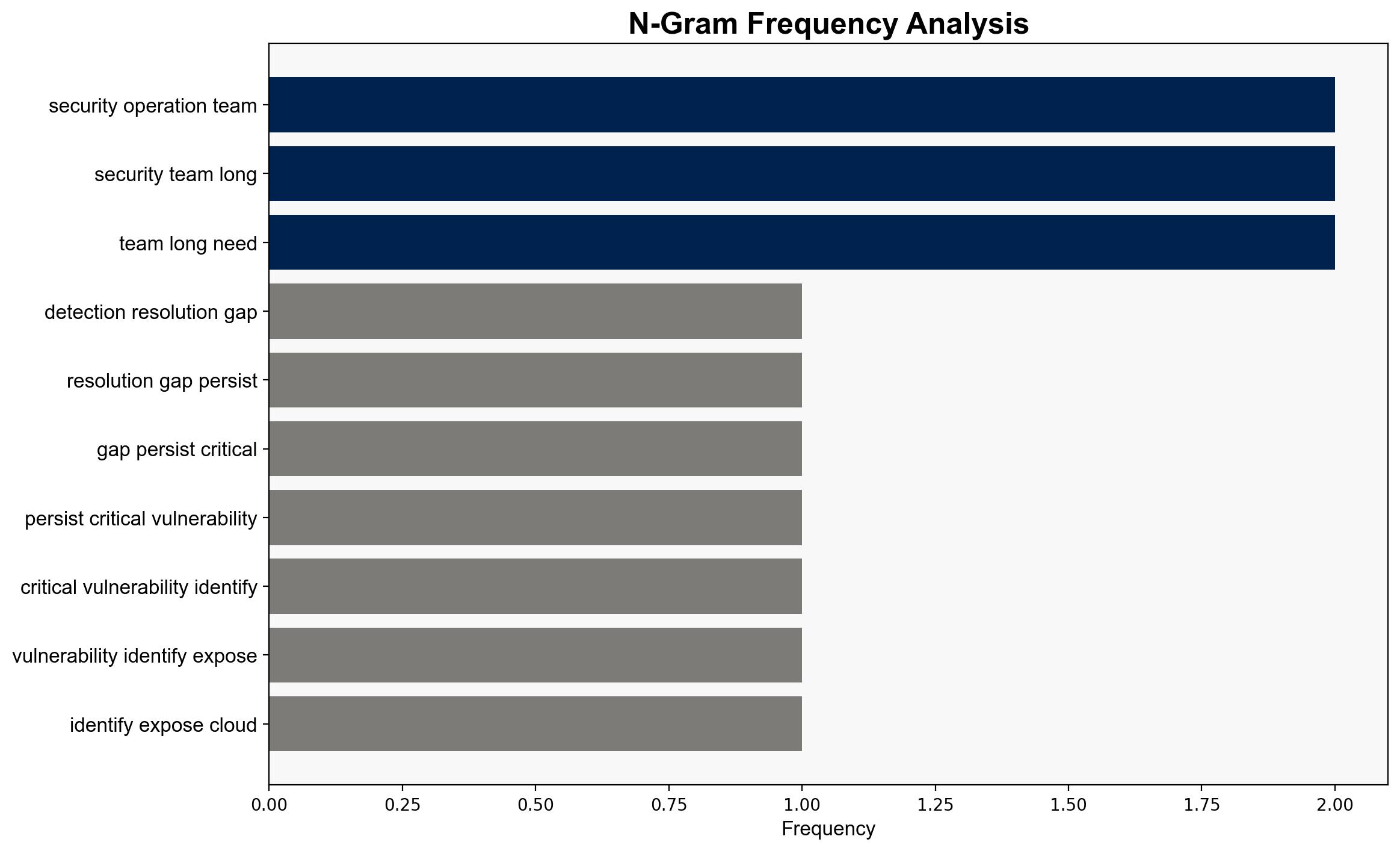Bridging the Remediation Gap Introducing Pentera Resolve – Internet
Published on: 2025-10-22
Intelligence Report: Bridging the Remediation Gap Introducing Pentera Resolve – Internet
1. BLUF (Bottom Line Up Front)
Pentera Resolve aims to enhance cybersecurity by automating the remediation process, potentially reducing the gap between vulnerability detection and resolution. The most supported hypothesis suggests that Pentera Resolve will effectively streamline security operations through integration and automation. Confidence level: Moderate. Recommended action: Organizations should consider integrating Pentera Resolve to enhance their cybersecurity posture, focusing on automating remediation workflows to reduce operational friction.
2. Competing Hypotheses
1. **Hypothesis A**: Pentera Resolve will significantly improve the efficiency of cybersecurity operations by automating the remediation process, leading to faster and more reliable vulnerability resolution.
2. **Hypothesis B**: Despite its potential, Pentera Resolve may face challenges in integration and adoption, limiting its effectiveness in closing the remediation gap due to organizational resistance and technical complexities.
Using the Analysis of Competing Hypotheses (ACH) 2.0, Hypothesis A is better supported due to the explicit focus on automation and integration with existing platforms like ServiceNow and Jira, which are widely used in enterprise environments.
3. Key Assumptions and Red Flags
– **Assumptions**:
– Organizations have the necessary infrastructure to integrate Pentera Resolve.
– Security teams are willing to adopt automated solutions.
– **Red Flags**:
– Potential over-reliance on automation could lead to oversight of nuanced security issues.
– Resistance from security teams accustomed to traditional methods.
– **Blind Spots**:
– The snippet does not address potential compatibility issues with legacy systems.
– Lack of detailed case studies or empirical evidence supporting the tool’s effectiveness.
4. Implications and Strategic Risks
– **Cybersecurity**: Successful implementation could set a new standard for cybersecurity operations, reducing the time between detection and resolution.
– **Economic**: Organizations may face initial costs associated with integration and training, but long-term savings could be realized through increased efficiency.
– **Operational Risks**: Failure to integrate effectively could lead to fragmented security efforts and increased vulnerability exposure.
5. Recommendations and Outlook
- Organizations should conduct a pilot program to assess Pentera Resolve’s integration capabilities and impact on existing workflows.
- Develop a change management strategy to address potential resistance from security teams.
- Scenario Projections:
– **Best Case**: Seamless integration leads to a significant reduction in unresolved vulnerabilities.
– **Worst Case**: Integration challenges result in operational disruptions and increased security risks.
– **Most Likely**: Gradual improvement in remediation efficiency as teams adapt to new workflows.
6. Key Individuals and Entities
– Pentera (Company developing the Resolve tool)
– ServiceNow, Jira, Slack (Platforms mentioned for integration)
7. Thematic Tags
national security threats, cybersecurity, counter-terrorism, regional focus





